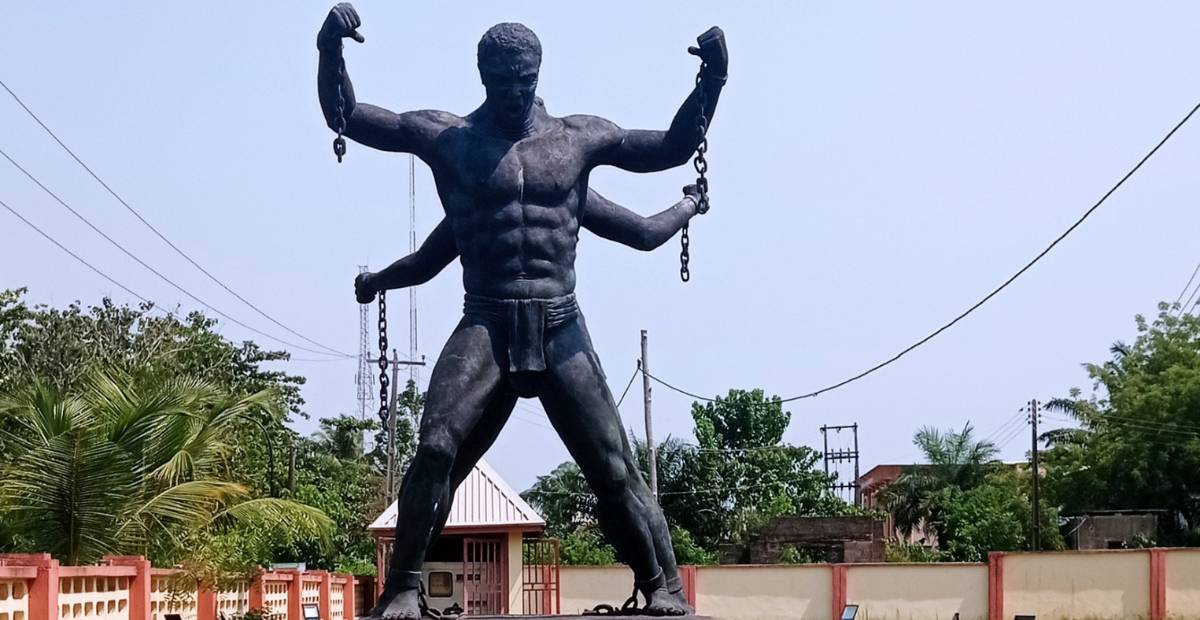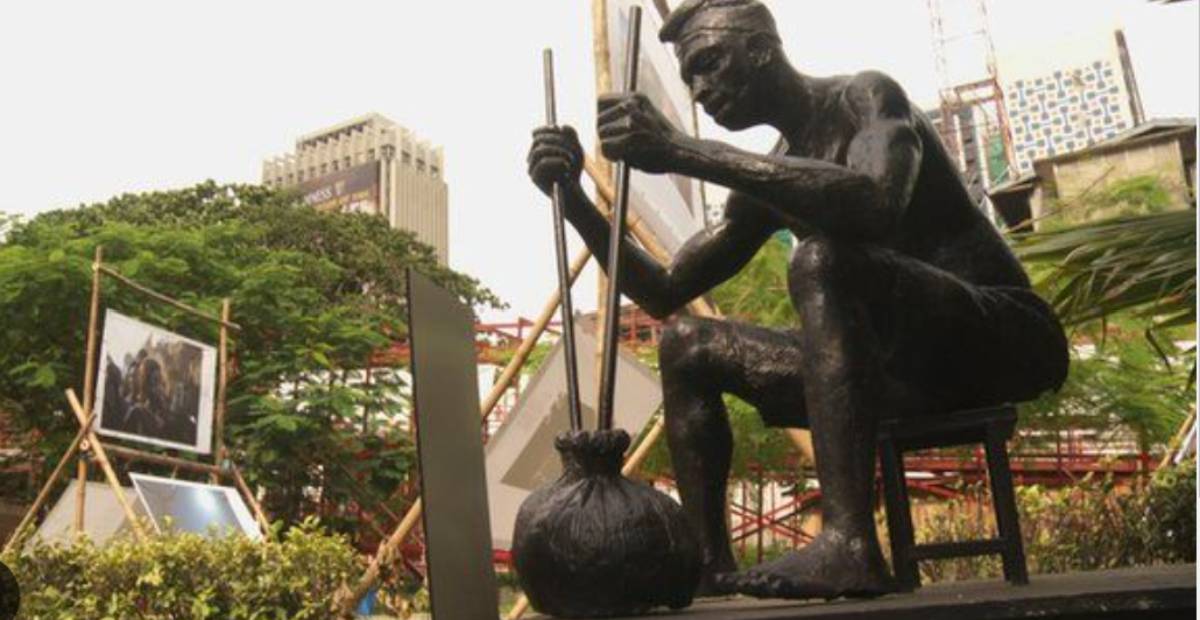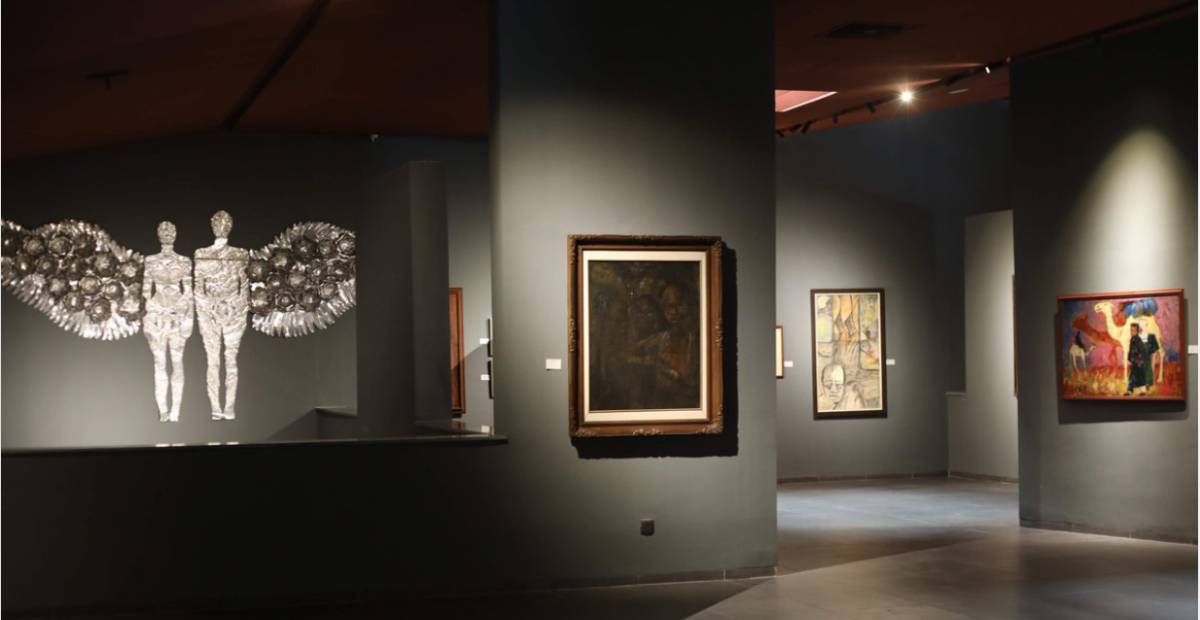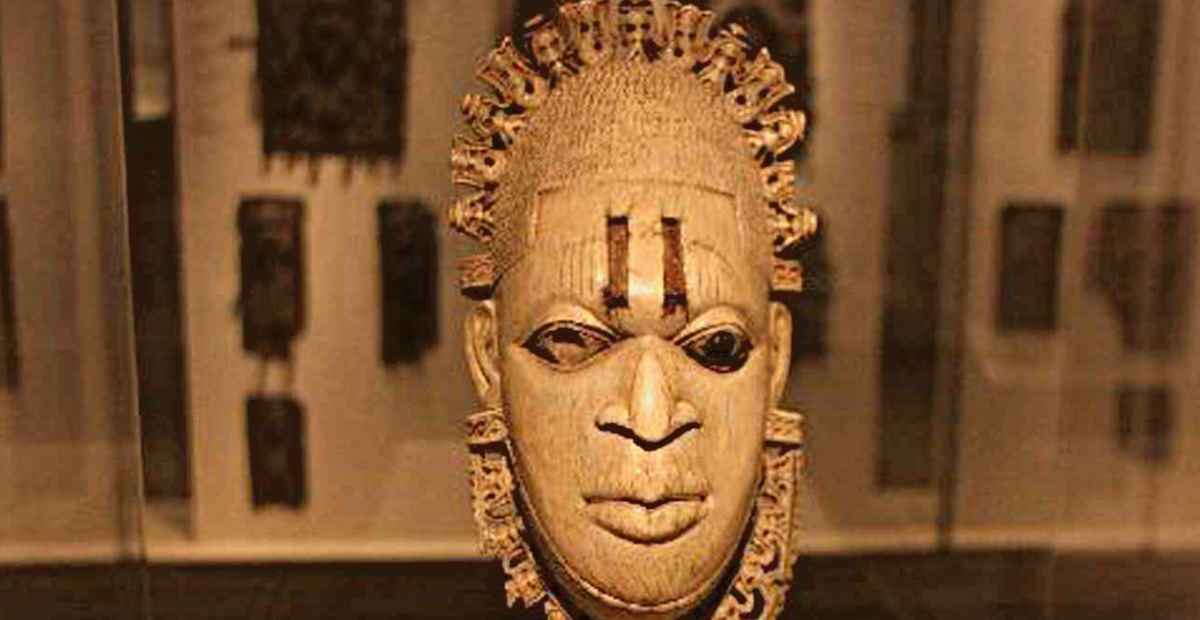A Cultural Odyssey: 5 Top Museums In Lagos
March 8, 2023
Are you ready to embark on a journey of discovery through Lagos’ top museums? Whether you’re a local or traveler, exploring the rich history and cultural heritage of Lagos is a must-do experience. From traditional art and artifacts to contemporary installations, museums in Lagos offer a unique window into the city’s past and present.
So join us on this cultural odyssey as we explore 5 of the best museums in Lagos and delve deeper into the vibrant cultural tapestry that makes this city so special.
1. Badagry Heritage Museum

The Badagry Heritage Museum, also known as the Black Heritage Museum, Badagry, is a historic tourist site in Nigeria managed by the Nigerian Cultural Commission.
The museum aims to educate visitors on the injustice and brutality of the transatlantic slave trade, as well as showcase the rich cultural and historical heritage of Africa, with a specific focus on the pre and post-slavery era in Badagry.
Originally built as a colonial administrative office to serve the British Government in Nigeria, the museum was inaugurated on August 22, 2002, during the Black Heritage Festival in Badagry.
It has since become a vital center of remembrance of the slave trade era, holding hundreds of slave and historical relics covering over 300 years of slavery.
The Badagry Heritage Museum features eight galleries, each dedicated to a particular theme relating to the local heritage and transatlantic slave trade. Visitors can explore artefacts, drawings, paintings, and sculptures from the slave trade era, gaining insight into the brutal history of the region. The museum is a place of reflection and education, offering a glimpse into how far Nigeria has come as a nation.
Sections of the Badagry Heritage Musuem
The first gallery, known as the Introductory Gallery, serves as an introduction to Badagry, its people, culture, rulers, leadership, and past leaders in Nigeria.
The second gallery, The Capture, houses relics of slavery, including chains used to tie slaves, pictures of slaves in captivity, and instruments used in torturing and capturing slaves, such as mouth muzzles and handcuffs. This section is an emotional one that portrays the harsh realities of slavery.
The third gallery, Transportation, explains how slaves were transported, and it features a replica of the ship used to transport slaves during the slave trade era. This ship was also used to export other organic products from Badagry.
The fourth gallery, The Equipment, showcases equipment and machinery used during the slave trade era. It includes a hundred-year-old safe containing documents dating back hundreds of years, files, and currencies used during the slave trade era.
The fifth gallery, The Resistance and Punishment, exhibits different objects used in punishing disobedient, rebellious, or thieving slaves. It features the statue of a dog trying to strangle a slave attempting to escape.
The sixth gallery, The Industry, further explains the process of the slave trade industry. It shows how the slaves were captured, and stored in the slave barracoon until the slave masters were ready to pick them up.
The seventh gallery, The Integration, displays how the slave dealers adapted slaves to the new environment to ensure they get the best out of them.
Finally, the eighth gallery, The Abolition, provides more information about the people and heroes who fought for the abolition of the slave trade. It features the heroic story of a woman who saved over 300 people from slavery and gives more information about the end of slavery.
Alongside the historical artifacts and exhibits, the museum also features contemporary artwork that provides a modern perspective on the legacy of slavery and its impact on society. These artworks serve as a reflection on the lasting effects of slavery and how it continues to shape the world we live in today.
2. Kalakuta Republic Museum

Step inside the Kalakuta Museum in Ikeja, Lagos and experience the authentic surroundings of Fela Anilulapo Kuti’s life and career. The museum is situated in the very house where Fela resided with his family and Egypt 80 until his passing in 1997.
In the early 1970s, Kalakuta Republic was a recording studio and commune, but Fela felt he couldn’t be part of Nigeria’s corrupt military government.
The three-storey house served as the base of operations for Kalakuta Republic, the independent, self-governing state that Fela declared in defiance of Nigeria’s military dictatorship.
He believed in fighting European cultural imperialism and supporting African traditions and lifestyles.
The museum is a treasure trove of Fela’s personal belongings and artifacts. The name Kalakuta Republic is derived from the time Fela spent in prison in 1974 on suspicion of possessing weed.
He was held in a communal cell which his fellow prisoners jokingly called Kalakuta Republic – in Swahili, kalakuta means “rascal”. Fela found the tag to be fitting and later adopted it for his own purposes.
The museum’s main attraction is Fela’s bedroom, preserved just as he left it. The mattress is on the rugged floor with the bedspread a little bit rumpled, while his pillows are bunched together with his saxophone defiantly watching from the far end of the room.
The Kalakuta Museum officially opened to the public on October 15, 2012, marking the late musician’s birthday and the opening ceremony of the annual Felabration festival held at the New African Shrine.
Experience the life and legacy of Fela Anikulapo Kuti at the Kalakuta Museum, a must-visit destination for music lovers and history buffs alike.
3. Freedom Park Museum

Encounter the rich history and culture of Nigeria at Freedom Park, a memorial and leisure park located in the heart of downtown Lagos Island. This serene abode was formerly Her Majesty’s Broad Street Prison but has since been transformed into a National Memorial, Historical Landmark, Cultural Site, and Arts and Recreation Centre.
Designed by Architect Theo Lawson under the CIA-Lagos (formerly Creative Intelligence Agency and now Cultural Intellectual Association) in 1999, Freedom Park features a museum building with permanent installations on its first floor that represent the spirit of the former prisons.
Original materials including window bars, cannon balls, and farm tools used by prisoners are on display, along with works that showcase the prison’s transformation and records, photographs, and architectural plans.
The ground floor of the museum is an open space that occasionally hosts art exhibitions, workshops, screenings, seminars, and other programs. With a 100-person seating capacity, it’s the perfect location for events.
The park also boasts monuments that reveal Lagos’ colonial heritage and the history of Her Majesty’s Broad Street prisons. It was built to commemorate the 50th anniversary of Nigeria’s independence celebration in October 2010.
Broad Street Prison was established after Britain made Lagos a colony in 1861, and the initial prison structure was built in 1882 with mud walls and grass thatch. However, the structure was sabotaged and set on fire by opponents of British colonialism.
The colonial government then imported bricks from England and rebuilt the prison in 1885. According to Theo Lawson, the architect of Freedom Park, the government’s expense on the prison in 1882 (£16,000) revealed its priority on law and order versus other initiatives such as education which the government only spent £700 on.
In 1979, Broad Street Prison was demolished and reduced to a dumping ground until the 1990s when plans were drawn up to transform the site into a creative space. Freedom Park was born out of the ruins of Her Majesty’s Broad Street Prisons and is now a peaceful and welcoming space for individuals and visitors to reflect, interact, and enjoy cultural events and recreational entertainment.
The park is open to the public every day and is a true testament to Nigeria’s history and heritage
4. National Museum Lagos

The Nigerian National Museum is a treasure trove of Nigerian art, located in the vibrant city of Lagos. The museum is dedicated to preserving the rich cultural heritage of Nigeria, featuring an extensive collection of artifacts, ranging from statuary, and carvings, to archaeological and ethnographic exhibits.
Founded in 1957 by English archaeologist Kenneth Murray, the Nigerian National Museum houses an estimated 47,000 objects, including textiles, jewelry, crafts, and musical instruments from different ethnic groups in Nigeria. The museum also has an impressive collection of sculptures, including those of animals, as well as traditional masks, divination bowls, and ancestral figures.
One of the most noteworthy pieces in the museum is the terracotta human head, famously known as the Jemaa Head, part of the Nok culture. This incredible piece is named after the village of Jema’a, where it was discovered. It is just one of many remarkable artifacts that the museum has to offer.
Visitors can explore the different sections of the museum, which showcase the cultures of ethnic groups such as the Yoruba, Ibibio, and Igbo. The Yoruba section, for example, features Egungun costumes, clay pots, and statues dating back to various periods of Nigerian history.
The museum has also featured works by Nigerian artists, including Nike Davies-Okundaye, Abiodun Olaku, and Ben Enwonwu, to name a few. In 2012, the museum held an exhibition showcasing artwork by Ndidi Dike, while in 2019, it featured art pieces by German-Nigerian artist Ngozi Schommers.
The Nigerian National Museum is an important cultural institution that allows visitors to immerse themselves in the rich history and diverse cultures of Nigeria. From exquisite sculptures and artworks to historical artifacts and photographs, the museum is a must-visit destination for anyone interested in Nigerian art and culture.
5. Yemisi Shyllon Museum

Yemisi Shyllon Museum of Art (YSMA) in Lagos is a true gem, being the first purpose-built, privately-owned art museum in Nigeria. The museum boasts an impressive 900 square meters of space.
Shyllon’s collection is truly one-of-a-kind, featuring not only works by Nigerian artists, but also artists from other African countries like Ghana, Senegal, South Africa, Cameroon, and Togo.
The Yemi Syllon Museum of Arts was founded by the Yoruba prince of Abeokuta, Yemisi Shyllon, who has an impressive collection of 55,000 photographs and 7,000 artworks.
His vision was to create a space where visitors could experience the breadth and depth of African art and culture. And with the YSMA, he has truly achieved that goal.
The museum was designed by the Spanish-Nigerian architect Jesse Castellote and features about 1,200 artworks, most of which were donated by Shyllon himself. Thanks to his generosity, the YSMA is now home to one of the most diverse and comprehensive art collections in the country, available for all visitors to enjoy.
Yemi Shyllon’s Collections
The museum’s collection includes works from established Nigerian artists like Ben Enwonwu, Uche Okeke, Aina Onabolu, El Anatsui, Erhabor Emokpae, Yusuf Grillo, Lamidi Fakeye, Bruce Onabrakpeya, Ben Osawe, Isiaka Osunde, Okpu Eze, Abayomi Barber, Gani Odutokun, and Kolade Oshinowo.
In addition to these established artists, the Yemi Syllon Museum of Arts also showcases the works of younger artists like Kainebi Osahenye, Ben Osaghae, Peju Layiwola, Tony Nsofor, Peju Alatise, Victor Ehikhamenor, Lanre Tejuoso, Eva Obodo, Ozioma Onuzulike, Uchay Chima, Ayobola Kekere-Ekun, and Kelani Abass.
Some of the popular pieces in Yemi Shyllon’s collection are the Ife bronze head and the Benin bronze water spirit figure. Some others are the epa masks and an agere ifa.
We highly recommend a visit to this museum to anyone interested in exploring the rich cultural heritage of Lagos and Nigeria as a whole.
Explore Where Art Meets History
Lagos is a vibrant and culturally-rich city that offers a plethora of museums and cultural centers to explore. From the Nigerian National Museum to the Kalakuta Republic Museum, each destination has its own unique charm and significance. By immersing yourself in the history, art, and culture of Lagos, you’ll gain a deeper appreciation for the city and its people. If you’re interested in exploring more of Lagos’ art scene, be sure to check out our article on 7 Must-Visit Art Galleries In Lagos. Happy exploring!


